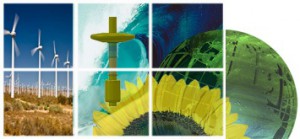KBSI is developing an innovative power pack for remotely deployed buoys. The buoys enable communication, via a distributed sensor network, among the Navy’s underwater assets and assets above water. The P3 technology uses wave power rather than batteries to power the buoy sensors.
The U.S. Navy and commercial oceanographic sensor manufacturers are building a distributed at sea communications network capability that will enable communications among various platforms such as Unmanned Undersea Vehicles (UUVs), Unmanned Surface Vehicles (USVs), and even other oceanographic sensors. By coupling the undersea communications network with the sea mainstream Global Information Grid (GIG) communications infrastructure, the distributed network hopes to enable end-to-end connectivity among surface, air, shore, undersea platforms, and undersea sensors. The goal of this network is to multiply the capabilities of existing platforms by enabling two-way communication both below and above the water and, in effect, enabling ultimate Network Centric Warfare (NCW) capabilities.
Current research in distributed sensor networks has demonstrated the effectiveness of these networks using low power computing and fault tolerant distributed wireless communication. A significant stumbling block, however, is the lack of power source innovations to keep the assets alive for the life of the sensors. The main bottlenecks are the small size of the sensor platforms and the lack of technology to capture renewable sources of power at that form factor.
 In this initiative, KBSI is focusing on this central issue: providing power for the remotely deployed buoys that enable communication among the underwater assets and assets above water. The cost of replacing batteries on these remotely located buoys is so exorbitant that currently these assets are used and wasted after the termination of battery life. Our intent is to design a maintenance free Parasitic Power Pack (P3) with a shelf life greater than that of the sensor or the buoy, thereby extending the duration of the distributed sensor network that supports ForceNet. Our design uses wave power, which is an inexhaustible source and readily available to the floating buoy.
In this initiative, KBSI is focusing on this central issue: providing power for the remotely deployed buoys that enable communication among the underwater assets and assets above water. The cost of replacing batteries on these remotely located buoys is so exorbitant that currently these assets are used and wasted after the termination of battery life. Our intent is to design a maintenance free Parasitic Power Pack (P3) with a shelf life greater than that of the sensor or the buoy, thereby extending the duration of the distributed sensor network that supports ForceNet. Our design uses wave power, which is an inexhaustible source and readily available to the floating buoy.
P3’s unique design converts low frequency, large amplitude wave oscillations into useful power and can be modularly integrated into buoys just as easily as replacing a battery pack. P3 absorbs wave induced oscillations of the buoy and uses a unique inertial spring mass damper system to convert the oscillations into electric power. P3 delivers steady power from a randomly fluctuating input source. We chose a wave power design because the buoys are immersed in the wave environment, and even though the buoys are not designed for wave power extraction, the buoy motion is sufficient to power these sensors.
The KBSI team, led by Dr. Paul Koola, applied their expertise in the following key areas for the design of the P3 system:
- The input ocean waves;
- An inertial system to convert the free floating oscillations of the buoy into relative motion (Inertial Pumps);
- The conversations of low speed oscillations to high speeds suitable for electrical machinery; and
- The actual design and prototyping of the turbo-generator system.
KBSI has transitioned the engineering, test, and development efforts into a working P3 prototype.
The P3 technology offers a promising solution to the sustainability limitations arising from battery size constraints in buoy sensor networks. By converting low frequency large amplitude wave oscillations into useful power using technology that can be modularly integrated into buoys, P3 addresses a significant distributed ocean sensor hurdle: lack of a sustainable power infrastructure. The use of P3 could allow for a live distributed grid with a very long life that is self contained and integrated. A large number of these integrated nodes could be deployed in an area of interest and networked together, providing the capability to detect, track, and report on any data of interest: potential threats such as the presence and movements of enemy personnel or vessels, biological or chemical agents, radioactive fallout, etc.
In the commercial arena, these sensor networks could be used to monitor environmental conditions, study climate changes, track animal populations, etc. The modular design of the P3 technology can also benefit the commercial shipping industry by powering sensors in hard to reach areas such as double hulls.
